Contributor: Jacob Adler
Work and Life is a radio program hosted by Stew Friedman, director of the Wharton Work/Life Integration Project, on Sirius XM’s Channel 111, Business Radio Powered by Wharton. Every Tuesday at 7 pm EST, Stew speaks with everyday people and the world’s leading experts about creating harmony among work, home, community, and the private self (mind, body, and spirit).
Nancy Vitale is the Vice President of Human Resources for Genentech and Regional Human Resources Head for Roche Pharma North America. She leads a team of nearly 200 HR professionals dedicated to creating a great place for the organization’s 14,000+ employees to do their best work. Before Genentech Nancy held high level HR positions at Gillette, P & G, and Deloitte Consulting.
The following are edited excerpts of her conversation with Stew Friedman. Full podcast.
Stewart Friedman: Genentech often lands on the Best Places to Work for lists. What’s the secret to your success?
Nancy Vitale: 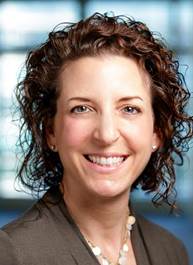 We make medicines to treat some of the world’s most challenging diseases. This includes discovering, developing, manufacturing medicines. This year, we’re celebrating our 40th anniversary. One of our secrets to the success of being a Best Place to Work for is our culture. That is the secret sauce. We’ve been dedicated to creating a connected, inspiring culture for the 14,000 employees who come to work everyday and deliver on that mission to help people who suffer from serious diseases. We’ve been pushing scientific boundaries for almost 40 years, and given this, we’re also aware that success as an organization is tied directly to engagement and resilience of our employees.
We make medicines to treat some of the world’s most challenging diseases. This includes discovering, developing, manufacturing medicines. This year, we’re celebrating our 40th anniversary. One of our secrets to the success of being a Best Place to Work for is our culture. That is the secret sauce. We’ve been dedicated to creating a connected, inspiring culture for the 14,000 employees who come to work everyday and deliver on that mission to help people who suffer from serious diseases. We’ve been pushing scientific boundaries for almost 40 years, and given this, we’re also aware that success as an organization is tied directly to engagement and resilience of our employees.
SF: A lot of companies talk about creating a culture that engages and supports people, about resilience in the face of adversity, and about things like the capacity to persist, be creative, and diligent in getting important work done. Let’s drill down a little further on that. Nancy, if you could tell our listeners some of the things that you do to ensure that you’ve got the kind of culture that does have that kind of impact.
NV: A lot of companies will point to programs and benefits and specific offerings, but I’d say the thing that is most meaningful to us is clarity of mission and purpose. It’s actually one of the most fundamental components, in my opinion, to building a great place to work and a healthy culture. For us, people who can anchor to our mission, focus on creating, discovering, developing medicines that can treat individuals, they feel passionate about that. Our employees absolutely feel passionate about the work that we do. It helps them to remain engaged, find joy in their work, it’s very much part of the fabric of who they are, even in times of change and uncertainty. For us, it’s clarity of mission. It’s always focused on being science-driven, patient-centered. These are important pillars to our culture and we know that inspires our employees.
SF: What’s so interesting about that is that you demonstrated that in your first words to me. The first thing you talked about was the purpose of your company and what you do, so it’s clear to me in the way you spoke about it that you take this seriously and personally and it did seem to infuse your words with a sense of pride.
NV: No matter who you would ask, they would point to that. It could be a manufacturing technician, it could be a scientist, or a business partner. I think that’s what binds us all, is this community of individuals trying to deliver on our mission each and every day.
SF: It’s such an important element of what makes for a culture that truly does draw on the passions and interests of people. Having worked in this field for 30+ years, I can recall in the mid-80s that many of the leading firms that were in the vanguard of change – thinking and acting differently about work and the rest of life – were in the pharma business and it’s in part for this very reason. There’s a direct connection between the mission of providing life-giving services and treatments with the inspiration that people look for at work. It’s not surprising that you find that in the pharma industry.
NV: I think you’re right. For me, I’ve worked at Genentech almost 10 years and it’s the longest I’ve worked at any place. I think that speaks to the personal level of connection that people have with our company.
SF: How do you make clear the purpose and mission in such a way that each and every one of those 14,000 people feels like it’s his or her own?
NV:. There are banners that greet employees in every campus that they go to. We bring in patient speakers that are a regular reminder of why we come to work, speaking to the employees about the impact that the medicines have had on them. Our scientists are expected to publish papers and to share their research openly, so there is clear evidence of what we do and how we keep those elements of the culture and mission in front of the workforce.
SF: You bring in patients that have benefitted from your medicines?
NV: That’s right.
SF: To talk to research scientists, to talk to HR people?
NV: Everyone. In fact, every other year we have an event where anyone can sign up to attend and we bring in about a dozen different patients who are being treated with a number of different medicines that we make. But many functions, when they have a town hall or a big event, will bring in a patient speaker for that particular one. It doesn’t matter the function you’re in, it’s a long-standing practice that we have.
SF: What an awesome idea, and it’s one that must seem very natural to the people in your organization now.
NV: Typically, there’s not a dry eye in the audience because going back to your comment, the emotional connection that people have when they feel that they’re part of something bigger. They understand that their efforts are contributing to something bigger and having a big impact on society at large.
SF: Everybody wants that and we know especially young people today are demanding that in their workplaces. So you find organizations of all types – financial services companies, tech companies, manufacturing companies – all trying to do what you’re doing. How do you translate this idea of clarity of mission and purpose to impact and significance of the work itself? How would you transfer that to other organizations where it’s not so obvious?
NV: I think going back to this notion of culture, there is no right or wrong recipe for a great corporate culture. For individuals outside of biotech or pharma industry who may not have that view of what it is as a patient they’re serving, I think going back to an understanding of what is our specific mission, understanding the values, the customs, the creations, the achievements and failures of the different individuals within that organization that really do define the culture. I think companies evolve. Some of the lessons that we’ve had might be applicable to other folks in other industries as a leadership team to take a self-examination of what is the culture you’re aspiring to versus the culture you are experiencing in the day-to-day and understanding what you need to do to nurture the culture, the work environment. That’s instilling a mission that resonates with your people. What is the purpose that unites all the employees that make up a particular organization? Inspecting that culture for cracks in the foundation, where are we missing in terms of expected and actual culture? For us, a lot of that has started from the top. We’ve had conversations at our executive committee about the type of culture we want, recognizing that we also need to evolve that culture, and rewarding employees for the behaviors that reflect the culture that we aspire to. Those would be the few applicable lessons that I would say apply to any industry.
SF: Absolutely, but not easy to implement. The idea of focusing in any kind of organization on why we are here, what we stand for, the impact that we’re trying to have on making the world better in some way and being super clear about that and as you said, inspecting for cracks in the foundation, I think that’s a powerful, marvelous idea, but one that requires a serious commitment, time and energy, to look at and to be willing to be wrong or find problems and invest in not only finding them but to fix them. Most companies would find it difficult to sustain that sort of commitment. What drives your company to take that issue so seriously?
NV: It’s a recognition and acknowledgment of what’s the secret to Genentech’s success. I think there’s a clear acknowledgment from our founders 40 years ago that it was about the people, it was about the individuals that come to work everyday. One of our founders I think once said the greatest asset of our company walks out in sneakers everyday at the end of the day and I think that has carried thtrough. But I think that you’re right, it is a discipline. It’s the rigor and discipline that goes into that inspection. We’ve looked at a number of different sources of information and we constantly examine those different sources of information, whether it’s engagement surveys or external surveys and recognition that we receive, or information on a site like Glassdoor that might inform in a simple way. Is there a crack in the foundation? Is there an opportunity, something that needs attention? And you’re right. It is a discipline, but I think it’s part of who we are for the 40 years that we’ve been a company.
SF: When you think about how you want your employees to live and to work, what’s your conception for how you make real the value proposition of embracing the whole person and investing in who each individual is and what they can bring that’s unique to them and also enables them to live the kind of life they want to lead?
NV: I think you raise a very important point. In order for people to do their best work, we need to support them as a whole person … in their work and life so they can bring their best self to everything that we do. One of the things we’re continuously reinforcing is these wellbeing pillars that we have adopted from a book called Wellbeing: The Five Essential Elements by coauthors Tom Rath and Jim Harter. I don’t know if you’re familiar with that work, but these pillars are centered around career well-being and social wellbeing, financial wellbeing, community and physical. These five pillars encourage people to understand their own level of wellbeing within each area of focus, because this can be something very much personal to the individual. How do I seek my own level of wellbeing? It’s about providing resources for people to explore that, a framework where people can better understand for themselves how they’re doing against these five areas of focus.
SF: You’ve also done some investment in facilities that provide resources for people to take care of themselves, is that right?
NV: That’s right. Our headquarters is in San Francisco, California and we’re actually building an expanded employee center. This center will house an expanded medical clinic that people can go get primary care services, preventative screenings, an expanded fitness center, so gym memberships are free to every Genentech employee. They can go in at lunchtime, before work, after work, whatever is convenient for them. There is also a career lab, which is an actual lab where people can explore their development desires, career development aspirations, they can have one-on-one consultations with a career coach.
SF: That’s cool. So that’s part of the wellness center?
NV: It’s part of this employee center, which is this anchor around wellbeing. We’re trying to touch upon each of these five elements within this one center, but the biggest part of it is the physical wellbeing.
SF: Yes, because that is core to everyone’s vitality and sustainable engagement, right?
NV: Right, and I say for us specifically, as we’ve been looking at this in taking a particular look at total healthcare strategy for our organization, we found that as a healthcare company, less than half our employees were getting the preventative screenings that they should get. One of the things that is challenging for that is people will say they’re too busy to go get the screenings. We’re trying to put convenience in the equation, and if you can get to the employee center readily, it’s easy for you, we anticipate that we’ll see more adherence to people getting preventative screenings.
SF: Of course, that reduces your total healthcare cost structure, right?
NV: Yeah, I’d say that’s not a major driver, it’s more centered around improving the overall health of our employees. It’s also centered around addressing the healthcare needs of employees. And you’re right that doing it could potentially reduce the overall cost.
SF: I actually wasn’t surprised by the relatively low participation rate in the total healthcare offerings because that’s typical for many companies. What else are you doing besides convenience to ensure that people take advantage of health screenings and services?
NV: There’s a lot of different theories on how to approach this notion of wellbeing and wellness and as I said, the journey of each individual is very personal. Interestingly enough, I discovered my own journey last year and some of the challenges that I experienced. Last year, I was diagnosed with very early-stage breast cancer, and it was caught during a routine mammogram screening. Early diagnosis is one key in treating a disease like cancer, and after a successful surgery, I’m going to frequent screenings, hormone therapy, and I’m doing really well. What this taught me is that my own cancer diagnosis made me think about our employees and ask this question about why aren’t people putting as much time and energy into their own health as they do the health of the patients we serve, going back to the mission. This last year, we’ve take on a renewed focus on this physical wellness component and people getting preventative screenings. One of our efforts has been in people sharing their own stories and leaders talking about their own wellbeing. I just did with you but I did with the masses at Genentech last year and had a feature story in our company intranet. The point of me doing that was to spark action by sharing my personal story and the impact it’s had on me. I don’t have any data to say we’ve jumped up that number from 50% to 80% but I think we’re on a good trend. Anecdotally, I had an employee reach out to me and say because you shared your story I went in for an overdue mammogram. She was three years overdue and something was uncovered, she was diagnosed with an early-stage breast cancer, and she said you made a difference in at least one person’s life. That was the point.
SF: Why do people undervalue their own health, as a business issue? Why is it that people are so reluctant to invest the time and energy needed to take care of themselves?
NV: It’s a great question, and part of it is that we get caught up in the day-to-day. The frequent thing that we neglect is our self. It does take a commitment as a parent, as a partner, to focus on others. As a leader, I’m focused on my employees. But I think what we neglect to realize is that fundamentally, the first person we should be taking care of is our self, and we’ll have a lot more to offer to others. That’s why I think sharing personal stories and being open about this as a topic and role-modeling the behaviors that we desire is so important for us as leaders.
SF: For sure, and if you go a little bit further, what is the main inhibitor or barrier for people to take seriously the commitment to their own health? What do you see as the most important issue there?
NV: I think people will point to time and convenience, and that’s part of our focus and my hope is that other employers will focus on it as well. How do you create convenience for people to take care of themselves, how do you create flexibility for people to take care of themselves, how do you expect that people will take care of themselves, and how do you role-model that? Those are the things, when you talk about programs and offerings that can have a meaningful difference, is helping folks to focus on that number one person, and that’s themselves for their health.
SF: As you look to the future, what’s the most exciting to you as you think about how your company is going to evolve over the next five years in terms of its culture?
NV: As I said, this year we’re celebrating our 40th anniversary and it’s exciting for us to look and see what are the things we need to continue to nurture. So 40 years of successful history, how do we continue to nurture those elements but how do we also continue to evolve as an organization. What’s most exciting to me personally, as I think about our workforce, is how energized and passionate I know our people are about the company’s mission. I see that growing with the evolving healthcare landscape. For me, I’m excited about the possibilities as I think about our pipeline and making medicines that will help people facing these very daunting diseases.
About the Author
Jacob Adler , W’18, is a sophomore at Wharton and a contributor at The Daily Pennsylvanian, numberFire, and Fake Teams.
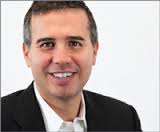 Let’s get into some examples. One that’s been fun at Vynamic is what we call “Zmail”. The Z stands for catching some z’s – catch some sleep. It’s an email HR policy at Vynamic where we ask that everyone on the team does not spend any time on email during Zmail hours — 10 p.m. to 6 a.m. Some people think that’s shocking – like how late 10 PM is and other people think what’s the big deal, shouldn’t we be sleeping then anyway? And the other big part of this policy is no emails over the weekend. Now if something urgent does comes up, we’ll take care of it by special exception and prior arrangement.
Let’s get into some examples. One that’s been fun at Vynamic is what we call “Zmail”. The Z stands for catching some z’s – catch some sleep. It’s an email HR policy at Vynamic where we ask that everyone on the team does not spend any time on email during Zmail hours — 10 p.m. to 6 a.m. Some people think that’s shocking – like how late 10 PM is and other people think what’s the big deal, shouldn’t we be sleeping then anyway? And the other big part of this policy is no emails over the weekend. Now if something urgent does comes up, we’ll take care of it by special exception and prior arrangement. is an undergraduate freshman in the Vagelos Program in the Life Sciences and Management at the University of Pennsylvania.
is an undergraduate freshman in the Vagelos Program in the Life Sciences and Management at the University of Pennsylvania.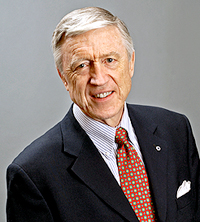 There’s an easy answer to that question Stew. I wrote my dissertation a little more than 30 years ago when I was a doctoral student at Cornell University. I was in a program in organizational studies, and serendipitously a faculty member with whom I was working closely got a big grant from the National Institute of Health to study the diffusion of innovations to hospitals. That was a project that I was fortunate enough to be involved in. I actually wrote my dissertation on data we collected from that study, and it turns out, at least in my case, that you become what you write. I started writing more about hospitals and innovation, and invitations to speak and consult and so on began to emerge from that. There was a bit of a tipping point there, where the kind of opportunities that were coming my way were largely in healthcare, and so I ultimately picked up that ball and ran with it.
There’s an easy answer to that question Stew. I wrote my dissertation a little more than 30 years ago when I was a doctoral student at Cornell University. I was in a program in organizational studies, and serendipitously a faculty member with whom I was working closely got a big grant from the National Institute of Health to study the diffusion of innovations to hospitals. That was a project that I was fortunate enough to be involved in. I actually wrote my dissertation on data we collected from that study, and it turns out, at least in my case, that you become what you write. I started writing more about hospitals and innovation, and invitations to speak and consult and so on began to emerge from that. There was a bit of a tipping point there, where the kind of opportunities that were coming my way were largely in healthcare, and so I ultimately picked up that ball and ran with it.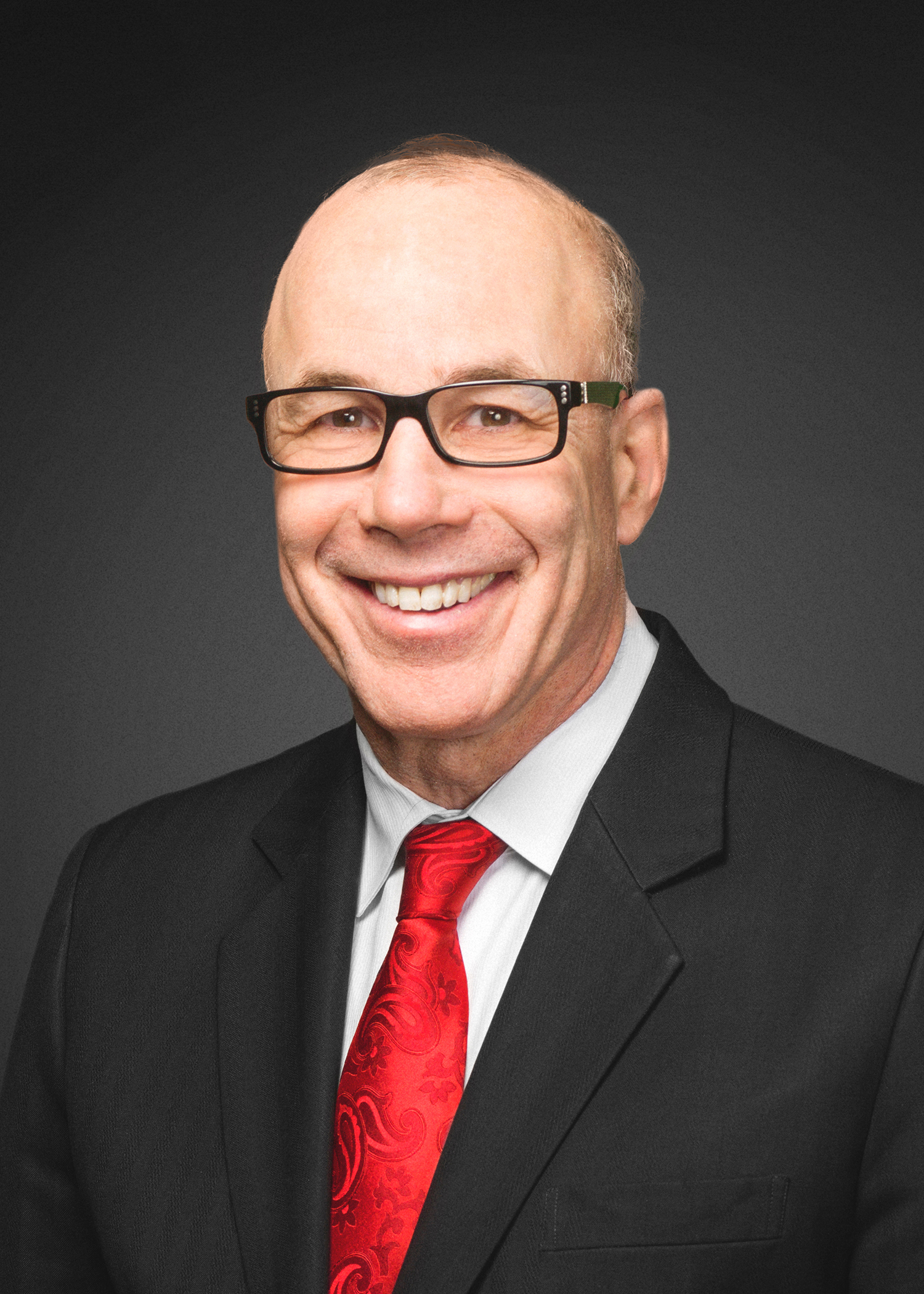 Part of what we’ve done in healthcare is focus on the past. Think about everything you can do as a consumer online. The Friday after Thanksgiving you can be in your pajamas watching Game of Thrones and do all your holiday shopping. But if you have a stomachache can you put “stomachache” on your iPhone and get an appointment with a doctor?
Part of what we’ve done in healthcare is focus on the past. Think about everything you can do as a consumer online. The Friday after Thanksgiving you can be in your pajamas watching Game of Thrones and do all your holiday shopping. But if you have a stomachache can you put “stomachache” on your iPhone and get an appointment with a doctor?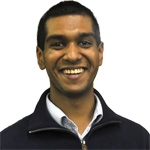 is an undergraduate junior at Wharton and in the Engineering School.
is an undergraduate junior at Wharton and in the Engineering School.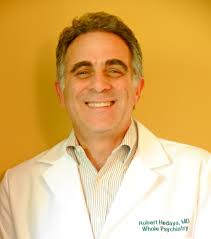 The short answer is that back in about 1983 or so when I first went into practice, I had a patient who was a 50-year-old woman. She had one child and a marriage that wasn’t so good, and her child was going off to college. She started having panic attacks, and I thought she was anxious about having to live with her husband or leaving her husband. I went through a series of standard treatments over the course of a year. Nothing worked – not therapy, not various medications, not cognitive behavioral therapy. I went back to the drawing board. I looked at her labs and saw that the size of her red blood cell count was a little bit larger than the upper limit of normal. I did a little research and found out that it could be a B12 deficiency. I gave her a B12 injection, and her panic attacks cleared up overnight. I was blown away. And I thought, “Gee, this is important. I wonder what else I’m missing. What else wasn’t I taught, and what didn’t my teachers know?” I eventually figured out that it is essential to remember that the head is connected to the body by the neck. I learned all the different interactions between the body and the mind and ultimately how the mind is really influenced by every level of our environment.
The short answer is that back in about 1983 or so when I first went into practice, I had a patient who was a 50-year-old woman. She had one child and a marriage that wasn’t so good, and her child was going off to college. She started having panic attacks, and I thought she was anxious about having to live with her husband or leaving her husband. I went through a series of standard treatments over the course of a year. Nothing worked – not therapy, not various medications, not cognitive behavioral therapy. I went back to the drawing board. I looked at her labs and saw that the size of her red blood cell count was a little bit larger than the upper limit of normal. I did a little research and found out that it could be a B12 deficiency. I gave her a B12 injection, and her panic attacks cleared up overnight. I was blown away. And I thought, “Gee, this is important. I wonder what else I’m missing. What else wasn’t I taught, and what didn’t my teachers know?” I eventually figured out that it is essential to remember that the head is connected to the body by the neck. I learned all the different interactions between the body and the mind and ultimately how the mind is really influenced by every level of our environment. Andrea Yeh is an undergraduate junior majoring in Operation and Information Management and in International Relations.
Andrea Yeh is an undergraduate junior majoring in Operation and Information Management and in International Relations.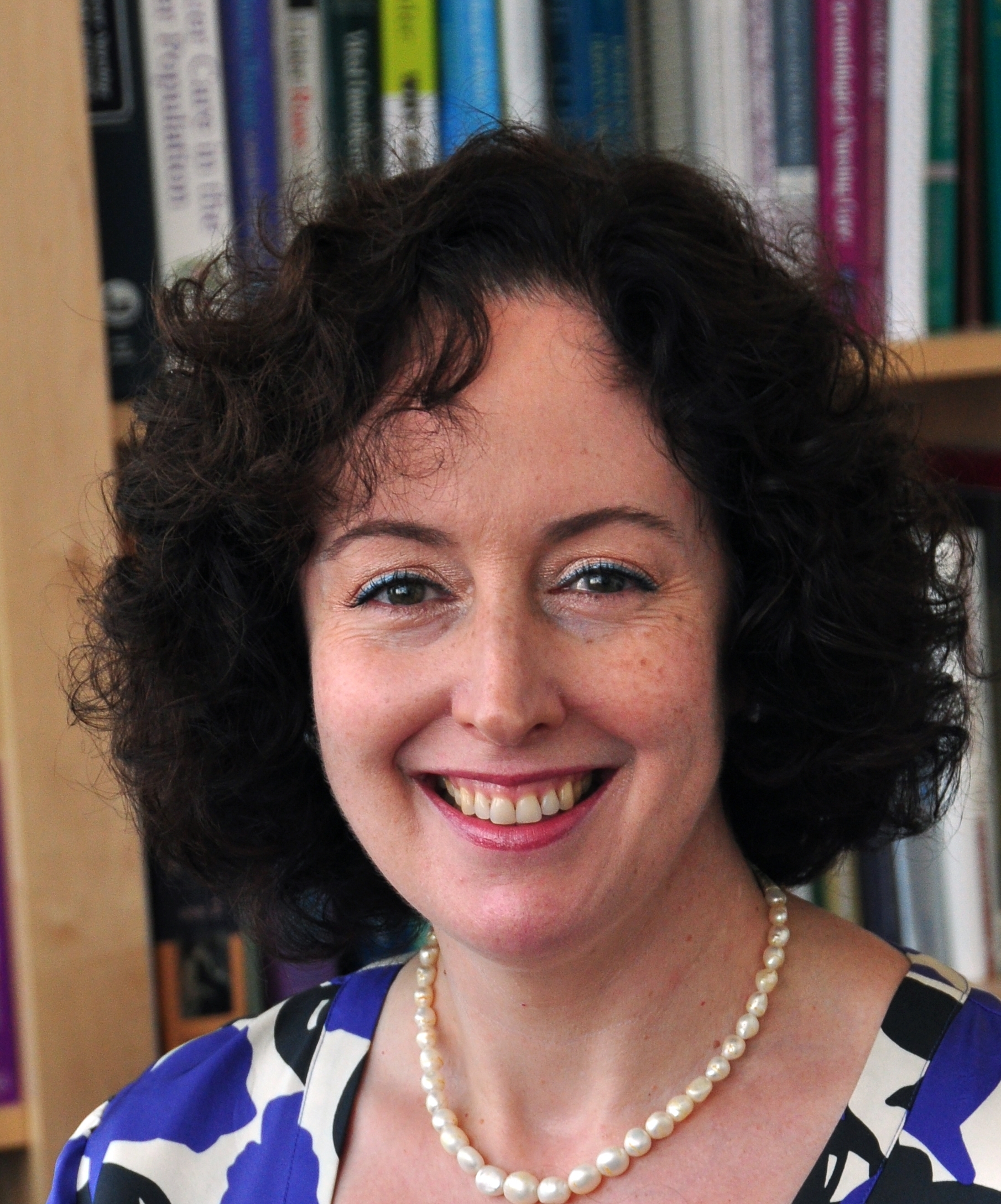 We’re seeing a big demographic shift. We’re becoming much older as a society and all sorts of things cascade from that. Your example of midlife women having to make choices about career and family responsibilities.
We’re seeing a big demographic shift. We’re becoming much older as a society and all sorts of things cascade from that. Your example of midlife women having to make choices about career and family responsibilities.